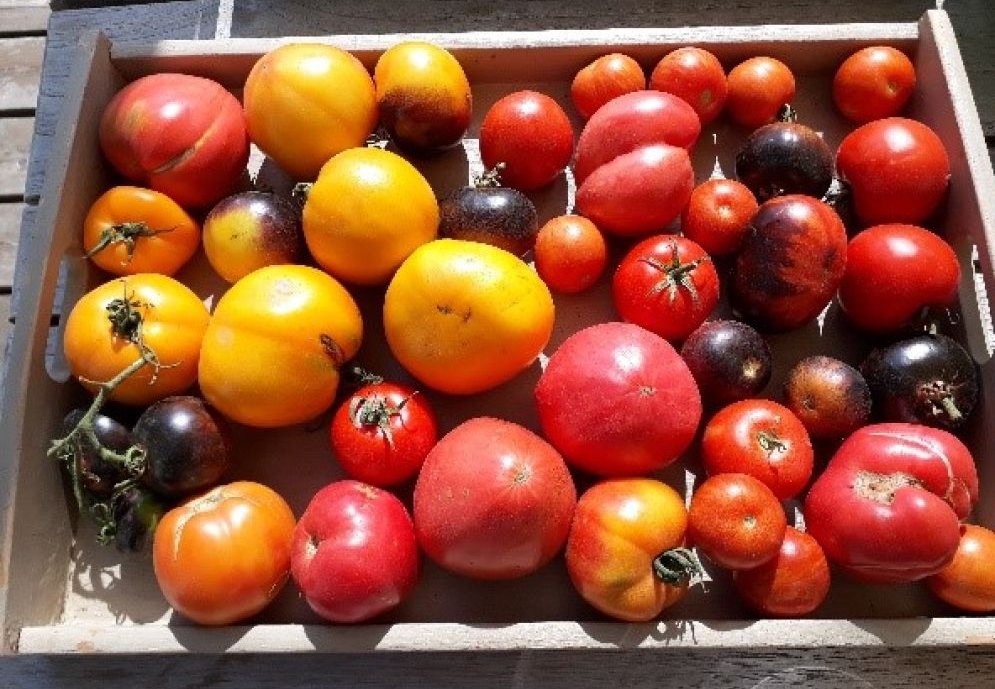

Become vegetable and fruit saver! preservation activity
Learning outcome
Students
- learn that fruit and vegetables are valuable and can be saved from rotting
- learn how to preserve fruit and vegetables
- acquire practical skills related to food preparation and processing
- experience self-efficacy and group spirit
Time required
from 2 hours to longer project
Tools or equipment
depends on preservation method (eg. cutting board, knife, pot, jars for filling, dryer)
Activity description
There is a large seasonal abundance of fruit and vegetables in the school environment - from school garden, parents or grandparents garden, farmers' markets, open garden or shops near the school, which rot if they are not savend and processed.
In this activity, pupils learn that fruit, vegetables and herbs are valuable and can be processed into fruit purée, dried fruit, pesto, sugo, juices, spreads, etc. and given away, sold or eaten together.
1. Become vegetable and fruit savers!
- Where could we save fruit, vegetable or nuts?
Are there any surplus harvests in the school community or from producers around the school that are not needed?
Are there trees, bushes in gardens and public areas that are not being harvested?
Are there any shops that would throw away vegetables that are not completely fresh?
Is there a ‘rescue requirement’ for fruit or vegetables in the schools fruit basket at or in the school kitchen?
- collect ideas, where to ask.
- organise the pickup or the collection.
2. Preserve the saved fruit and vegetables.
- Which preservation method can we use?
After the fruit and vegetables have been collected - what can you prepare with them?
- collect pupils´/students experiences and ideas of the pupils/students
- research the various options
- provide required materials
- carry out the preserving activity
Some ideas:
Apples - pressing and pasteurising juice, preserving applesauce in jars
Fruits - drying (for muesli, for snacking, for fruit tea blends), preserve jam or fruitsauce in jars
Herbs - drying (for herbal salt, herbal tea), making pesto
Tomatoes - drying, preserving sugo or tomato sauce or ketchup in jars
3. Use the preserved fruits and vegetable
- How do we use our preserved goods?
Ideas: eat together, use as a gift, sell on schools market or on christmas market, use in school kitchen
Additional material:
- Sustainable Food processing – preserving methods for teachers link
- Film about making apple juice with pupils (Projekt Aumühle) Youtube-link
- Preservation methods (Book „Natürlich Konservieren“, resource in German) link
Tips how to implement the topic to school curriculum
Natural sciences: understanding of the science behind food preservation - includes concepts like microbiology (fermentation, pickling, canning), chemical processes involved in food preservation and ecology (sustainability). Sustainable practices in food processing, nutritional benefits of various preservation methods and their impact on the quality of food.
Economics, Geography: household management, global aspects of food production, distribution, and the impact of methods on different regions, analyse the economic implications of food processing and distribution, including costs, benefits, and market trends.
Ethics: understand the ethical considerations surrounding food waste and its impact on the environment and society.
Culinary Arts: practical skills related to food preparation and processing.
All subjects: Improving research skills, organisational skills
